Audio Reviews August 2020
Listen to the majority of these recordings in the ICA August Reviews Spotify Playlist!
Gentle Winds: Chamber Music of Samuel A. Livingston. Arcadian Winds: Vanessa Holroyd, flute; Alicia Maloney, oboe; Mark Miller, clarinet; Marina Krickler, horn; Janet Underhill, bassoon; Pedroia String Quartet: Jae Cosmos Lee, violin; Rohan Gregory, violin; Peter Sulski, viola; Jacques Wood, cello; Yhasmin Valenzuela, clarinet. Samuel A. Livingston: Gentle Winds; The Old Man is Dancing; Call to the Mountains; Quiet Summer Night. Navona Records, NV6197. Total Time: 55:00.
Gentle Winds: Chamber Music of Samuel Livingston features the Arcadian Winds and the Pedroia String Quartet with clarinetist Yhasmin Valenzuela. The Arcadian Winds was founded in 1987 as a woodwind trio with flute, clarinet and bassoon that later formed into one of the leading contemporary woodwind quintets in New England. The ensemble is comprised of Vanessa Holroyd (flute), Alicia Maloney (oboe), Mark Miller (clarinet), Janet Underhill (bassoon) and (at the time of this recording) Marina Krickler (horn). The Pedroia String Quartet consists of Jae Cosmos Lee (violin), Rohan Gregory (violin), Peter Sulski (viola) and Jacques Wood (cello).
American composer, Samuel A. Livingston was born in Chicago in 1942. He is a self-taught composer with a collection of works for concert band, a quintet for clarinet and strings and chamber music for woodwinds. Livingston described his music as “folk-inspired classical chamber music” that also has “the influence of Western movie scores.”
The first work, Gentle Winds, is a quartet for flute, oboe, clarinet and horn performed by members of the Arcadian Winds. The first movement opens with a pleasant melody that playfully passes between voices, followed by a slow movement focusing on beautiful harmonies and colors. The last movement is lively with continued dialogue between the four instruments, but at the same time gentle. Similar to first work, The Old Man is Dancing, features three movements in the following pattern: fast-slow-fast. It is a trio written for flute, oboe and clarinet performed by Holroyd, Mahoney and Miller. This work consists of the main theme passed around to each of the voices. Call to the Mountains was written for woodwind quintet and is reminiscent of Western films in the way in which instruments respond to horn calls. The last work, Quiet Summer Night, is performed by the Pedroia String Quartet featuring clarinetist Yhasmin Valenzuela. This work was written in a similar manner to those for winds and features three movements. The piece was pleasing due to the musical dialogue between Valenzuela and the Pedroia Quartet. Since this is the first recording featuring all of Livingston’s chamber works, Valenzuela’s performance will serve as a reference recording for future generations of clarinetists who desire to perform this work. The piece is extremely beautiful and tonal and has piqued an interest in Livingston’s music.
Livingston is not only well-versed in writing for wind instruments, but also skillfully crafts his melodies in a musical way that makes them enjoyable. I highly recommend this recording!
– Kristine Dizon
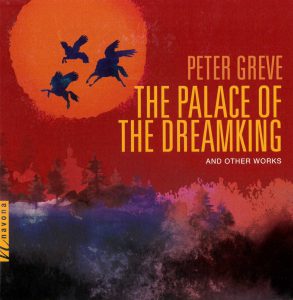 Peter Greve: The Palace of the Dreamking and Other Works. New Europe Symphony Orchestra, Peter Greve, conductor; Zagreb Festival Orchestra Brass Ensemble, Ivan Josip Skender, conductor; Kühn Mixed Choir, Karel Martínek, organ, Marek Vorlíček, conductor; Yhasmin Valenzuela, clarinet; Leo Eguchi, cello; Karolina Rojahn, piano; Janácek Philharmonic Orchestra, Anthony Armore, conductor; Ondřej Jurčeka, trumpet. Peter Greve: The Palace of the Dreamking; Partita for 11 Brass Instruments; Give us Peace; Trio for Clarinet, Violoncello and Piano; Magic Winter; Aria pour Trompette et Orgue. Navona Records, NV6257. Total Time 60:00.
Peter Greve: The Palace of the Dreamking and Other Works. New Europe Symphony Orchestra, Peter Greve, conductor; Zagreb Festival Orchestra Brass Ensemble, Ivan Josip Skender, conductor; Kühn Mixed Choir, Karel Martínek, organ, Marek Vorlíček, conductor; Yhasmin Valenzuela, clarinet; Leo Eguchi, cello; Karolina Rojahn, piano; Janácek Philharmonic Orchestra, Anthony Armore, conductor; Ondřej Jurčeka, trumpet. Peter Greve: The Palace of the Dreamking; Partita for 11 Brass Instruments; Give us Peace; Trio for Clarinet, Violoncello and Piano; Magic Winter; Aria pour Trompette et Orgue. Navona Records, NV6257. Total Time 60:00.
Peter Greve’s The Palace of the Dreamking and Other Works consists of a collection of contemporary classical programmatic works for different ensembles from symphony orchestra to duo.
Greve was born in 1931 in The Hague (Netherlands) where he received his musical training from Jean Antonietti, Léon Orthel, Theo Laanen, Marcus van Crevel, and later from Willem Frederik Bon, Myer Foggin and Terence Lovett. At the same time, he was studying at the State University of Leiden (Netherlands) where he obtained his M.Sc. (1957) and Ph.D. (1959) degrees in chemistry.
Greve is an eclectic and prolific composer whose knowledge of orchestration is apparent in all of his works. The Trio for Clarinet, Violoncello and Piano was commissioned by Maarten van Veen “in memoriam of his late wife Mary, who had died suddenly after having been married for more than 50 years.”
Each movement reflects different aspects of Mary’s personality. They are titled as follows: I. Day and Night at Het Bergelt, II. Reflection (Passacaglia), III. Dance. The work as a whole conveys peace, chaos, introspection and joy. The work features Yhasmin Valenzuela (clarinet), Leo Eguchi (cello), and Karolina Rojahn (piano). The piece featuring clarinet, cello, and piano was expertly written and sure to become a staple of the repertoire. The work itself is dynamic and versatile making for a thought-provoking listening experience. Valenzula, Eguchi and Rojahn do an excellent job performing as an ensemble through contrasting musical characters and dialogue. Valenzuela performs with a nice and centered tone that makes this piece enjoyable. The overall ensemble performance was excellent! The other recordings on this disc were also expertly performed and highly recommended.
– Kristine Dizon
 (Re)Discovering Masterpieces of New Romanticism. Radom Chamber Orchestra, Jan Jakub Bokun, conductor; Magdalena Jakubska-Szymiec, alto saxophone; Aleksandra Demowska-Madejska, viola; Adam Eljasiński, clarinet; Andrzej Wojciechowski, clarinet; Roman Widaszek, clarinet, basset horn; Grzegorz Wieczorek, clarinet, E-flat clarinet; Pawel Krauzowicz, basset horn; Jean-Marc Fessard, clarinet, basset horn, bass clarinet; Monika Hanus, piano. Łukasz Woś: Poem for Saxophone and String Orchestra; Nocturne for Saxophone and String Orchestra; Ballade and Rondo for Saxophone and String Orcehstra; Beniamin Baczewski: Concerto ‘Elima’ for Five Clarinets and String Orchestra; Dawid Pajdzik: Concerto for Viola, Clarinet and String Orchestra; Aleš Pavlorek: Concerto Grosso for Four Clarinets, Piano and String Orchestra. JBRecords, 023-2. Total Time 78:00.
(Re)Discovering Masterpieces of New Romanticism. Radom Chamber Orchestra, Jan Jakub Bokun, conductor; Magdalena Jakubska-Szymiec, alto saxophone; Aleksandra Demowska-Madejska, viola; Adam Eljasiński, clarinet; Andrzej Wojciechowski, clarinet; Roman Widaszek, clarinet, basset horn; Grzegorz Wieczorek, clarinet, E-flat clarinet; Pawel Krauzowicz, basset horn; Jean-Marc Fessard, clarinet, basset horn, bass clarinet; Monika Hanus, piano. Łukasz Woś: Poem for Saxophone and String Orchestra; Nocturne for Saxophone and String Orchestra; Ballade and Rondo for Saxophone and String Orcehstra; Beniamin Baczewski: Concerto ‘Elima’ for Five Clarinets and String Orchestra; Dawid Pajdzik: Concerto for Viola, Clarinet and String Orchestra; Aleš Pavlorek: Concerto Grosso for Four Clarinets, Piano and String Orchestra. JBRecords, 023-2. Total Time 78:00.
(Re)Discovering Masterpieces of New Romanticism, features the Radom Chamber Orchestra conducted by clarinetist Jan Jakub Bokun. It includes three pieces for clarinet chamber groups with string orchestra. These masterful performances were recorded live at the opening concert of the 2018 Clarimania Festival.
The first of the three works is Concerto ‘Elima’ by Polish composer Beniamin Baczewski and is written for five clarinets with string orchestra. In composing this work, Baczewski was influenced by Hawaiian music, but the piece is almost evocative of musical theater in the way that the orchestra interacts with the clarinet ensemble, the dance-like rhythms and articulations and the general spirit of the piece. The tone and technique of the clarinetists are impressive, both as individual soloists and as a blended ensemble.
The next clarinet work on the album is the Concerto for Viola, Clarinet and String Orchestra by Dawid Pajdzik, who is also Polish. This three-movement work is written to reflect much of the composer’s personal life and seems to blend new music compositional techniques with Eastern-European folk music. The clarinet playing is outstanding with masterful transitions between the registers, a lovely, fluid cadenza in the first movement and snappy ornaments in the folk music sections. Finally, the album features Czech composer, Aleš Pavlorek’s Concerto Grosso for Four Clarinets, Piano and String Orchestra. The interaction between the clarinetists is very engaging. The ensemble performs on both traditional B-flat clarinets and auxiliary instruments, with the second movement featuring beautiful contrasting solos between E-flat and bass clarinets. The piano is often treated as a solo instrument, making for a very unique texture from the entire ensemble.
In addition to these clarinet pieces, this album also features three works for saxophone and string orchestra. The CD case showcases pictures from the live performance and the liner notes are in Polish and English.
– Madelyn Moore
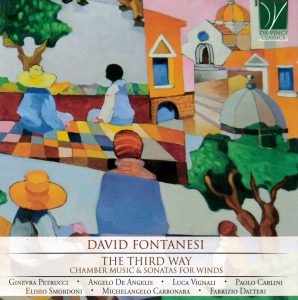 David Fontanesi: The Third Way, Chamber Music and Sonatas for Winds. Ginevra Petrucci, flute; Angelo De Angelis, clarinet; Luca Vignali, oboe; Paolo Carlini, bassoon; Eliseo Smordoni, bassoon; Fabrizio Datteri, piano; Michelangelo Carbonara, piano. David Fontanesi: Sonata Seconda for Flute and Piano; Sonata for Oboe and Piano; Sonata for Bassoon and Piano; Preludio, Intermezzo e Passacaglia for Clarinet; Diaphoniae Concertanti for Flute, Oboe, Clarinet and Bassoon. Da Vinci Classics, C00187. Total Time: 56:00.
David Fontanesi: The Third Way, Chamber Music and Sonatas for Winds. Ginevra Petrucci, flute; Angelo De Angelis, clarinet; Luca Vignali, oboe; Paolo Carlini, bassoon; Eliseo Smordoni, bassoon; Fabrizio Datteri, piano; Michelangelo Carbonara, piano. David Fontanesi: Sonata Seconda for Flute and Piano; Sonata for Oboe and Piano; Sonata for Bassoon and Piano; Preludio, Intermezzo e Passacaglia for Clarinet; Diaphoniae Concertanti for Flute, Oboe, Clarinet and Bassoon. Da Vinci Classics, C00187. Total Time: 56:00.
Italian composer David Fontanesi has released an album of his chamber music and sonatas for winds. The title of the album, The Third Way, is a reference to his method of composition, described in the liner notes as writing “contemporary music by moving along the lines traced by western classical music tradition…” Indeed, the featured works follow very traditional frameworks. In addition to sonatas for flute, oboe and bassoon, he includes an unaccompanied clarinet work and a woodwind quartet.
The Preludio, Intermezzo e Passacaglia for Clarinet is performed beautifully by Angelo De Angelis. The first movement, Preludio, showcases De Angelis’s smooth changes in register and crisp, clear articulation, while the second movement demands some very fast trills that are executed well. The third movement is the most contemporary of the three and features an extending flutter-tongued line. The piece as a whole is reminiscent of some of the Bach flute sonatas, but with a slight contemporary spin.
Fontanesi’s Diaphoniae Concertanti for Flute, Oboe, Clarinet and Bassoon is stylistically similar to early music, but often features dissonances and articulation styles more akin to the 21st century. The piece is comprised of twelve short movements and demonstrates the composer’s ability to blend and balance the woodwinds very effectively. Highlights for this listener were in the third movement, Allegro, Intavolatura which combines low clarinet and bassoon sounds in an unexpected fugue-like movement, as well as the charming melody and the way the ensemble blends in the eighth movement, Larghetto, Ricercare. Throughout the piece, the interaction of the ensemble is beautiful, and the individual musicians perform their parts with expertise and sensitivity.
– Madelyn Moore
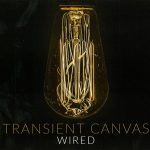 Transient Canvas: Wired. Amy Advocat, bass clarinet; Matt Sharrock, marimba. Kirsten Volness: Year Without a Summer; Peter Van Zandt Lane: Exergy Bubblebath; David Ibbett: Branches; Lainie Fefferman: Hyggelig; Rudolf Rojahn: Somnambula; Mischa Salkind-Pearl: solm; Dan VanHassel: Epidermis. New Focus Recordings, fcr218. Total Time: 54:32.
Transient Canvas: Wired. Amy Advocat, bass clarinet; Matt Sharrock, marimba. Kirsten Volness: Year Without a Summer; Peter Van Zandt Lane: Exergy Bubblebath; David Ibbett: Branches; Lainie Fefferman: Hyggelig; Rudolf Rojahn: Somnambula; Mischa Salkind-Pearl: solm; Dan VanHassel: Epidermis. New Focus Recordings, fcr218. Total Time: 54:32.
Wired is the second album released by Boston-based duo, Transient Canvas, featuring a diverse collection of works for bass clarinet, marimba and electronics. Members Amy Advocat (bass clarinet) and Matt Sharrock (marimba) commissioned all of the works included on this album. The project serves to document the duo’s ongoing effort to expand the repertoire for this unique instrumentation and further their self-proclaimed mission to “revolutionize the modern concert experience.”
All of the works included on the album vary greatly in style yet work well together to create a unique musical experience that defies traditional means of classification. The opening track, Year Without a Summer, is a programmatic work about the consequences surrounding a volcanic eruption and climate change. Advocat and Sharrock’s performance is marked with great sensitivity and nuance that coalesce with electronics to produce a perfectly balanced chamber ensemble. A quiet opening marked with interjections of bluesy, soulful bass clarinet playing gives way to exciting rhythmic passages that effectively take the listener on an entrancing journey through a sonic landscape that ends in a similar manner to which it began. Exergy Bubblebath, Branches and Epidermis showcase Advocat’s technical prowess with exuberant bass clarinet lines that join the marimba, played over electronic grooves that are a nod to popular music styles. Hyggelig and Somnambula once again showcase the duo’s ability to blend seamlessly with electronics to present a spellbinding musical aesthetic. Advocat’s tasteful approach to extended techniques in Solm fuses into an ethereal texture where it is difficult to decipher where acoustic instrument ends and electronics begin.
Wired is a wonderful compilation of works that showcase the capabilities of this combination of instruments and electronics. Advocat and Sharrock perform with great technical skill and musical sensitivity that are a perfect vehicle for artistic expression. Included with the album are notes about the compositions, with additional information available on the Transient Canvas website http://www.transientcanvas.com/wired-album. The production value of this album is also quite noteworthy, especially in regard to the balanced mix of bass clarinet, marimba and electronics. This album would be a wonderful addition to the collection of anyone looking to explore works that are refreshingly original and performed by a first-rate ensemble. Highly recommended!
– Karl Kolbeck
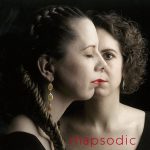 Rhapsodic. Heidy Huwiler, clarinet; Andrea Isch, piano. Marc Eychenne: Sonate pour Clarinette en La et Piano; Edwin York-Bowen: Sonata for Clarinet and Piano, Op. 109; George Gershwin/arr. Frédéric Cellier: Rhapsody in Blue. Independent Release. Total Time: 58:28.
Rhapsodic. Heidy Huwiler, clarinet; Andrea Isch, piano. Marc Eychenne: Sonate pour Clarinette en La et Piano; Edwin York-Bowen: Sonata for Clarinet and Piano, Op. 109; George Gershwin/arr. Frédéric Cellier: Rhapsody in Blue. Independent Release. Total Time: 58:28.
Duo Voltage is comprised of clarinetist Heidy Huwiler and pianist Andrea Isch. Each is an accomplished performer and teacher with an active freelance career based in Switzerland. In addition to traditional recitals and recordings, the duo specializes in innovative, interdisciplinary performances that integrate each member’s work as writer (Huwiler) and painter (Isch).
Duo Voltage’s debut recording, Rhapsodic, consists of three works: sonatas by Marc Eychenne (b. 1933) and Edwin York Bowen (1884-1961), both rarely heard gems of the clarinet repertoire, and Gershwin’s Rhapsody in Blue. True to the recording’s title, all three works convey a free, improvisatory quality. All three are heavily infused with jazz, too. The sonata by Algerian composer Marc Eychenne is decidedly French in spirit, with a playful humor that gives a wink to Jean Françaix. English composer Edwin York Bowen’s sonata is more academic in style but equally infectious. The Gershwin has been expertly adapted for clarinet and piano by Frédéric Cellier.
Duo Voltage’s musically committed and refined performances make this recording a sure winner. Huwiler’s vocality and rich sound are immediately striking, and she brings a refreshing ease to fast passagework; Isch proves to be a polished and sensitive partner. The pair espouse a straightforward approach to phrasing that suits the repertoire, and they skillfully convey the ebb and flow of rhapsodic works. Their choice to record appealing, yet uncommon, repertoire with such ease and taste shows how recital recordings can be fresh, relevant, and eagerly welcomed by listeners.
– David Yandl

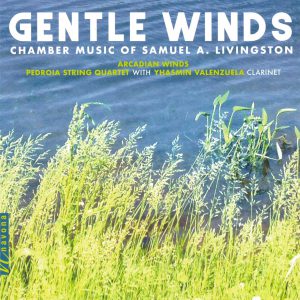
Comments are closed.